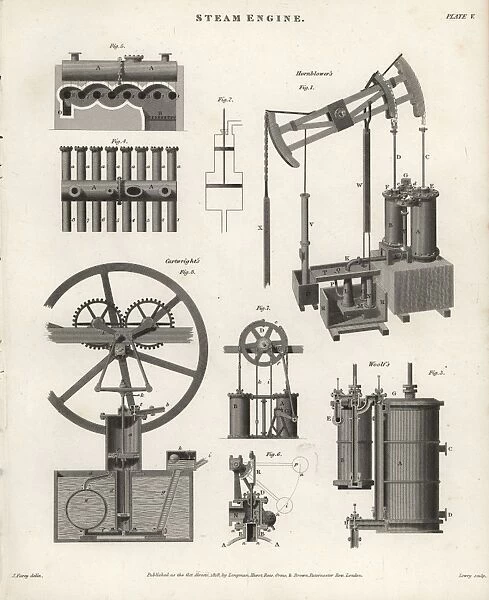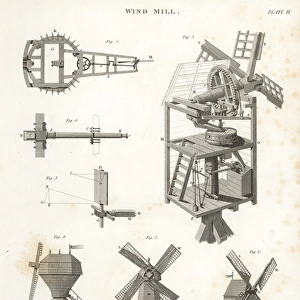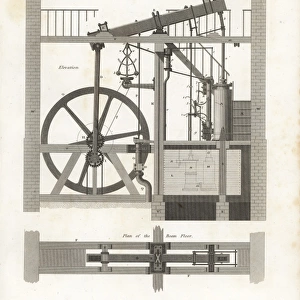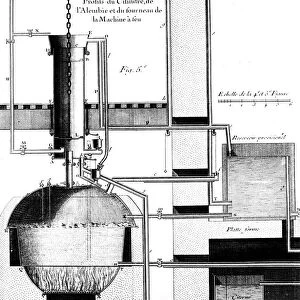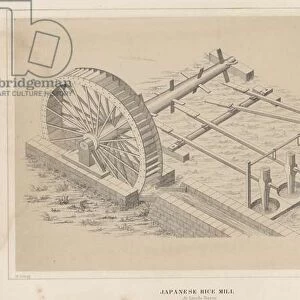Hornblowers, Cartwrights and Woolfs steam engines
![]()

Wall Art and Photo Gifts from Mary Evans Picture Library
Hornblowers, Cartwrights and Woolfs steam engines
Hornblower s, Cartwrights and Woolfs steam engines.. Steam engines: Jonathan Hornblowers compound steam engine, Edmund Cartwrights alcohol engine and Arthur Woolfs high-pressure compound steam engine, 18th and 19th century. Copperplate engraving by Wilson Lowry after an Illustration by J. Farey from Abraham Rees Cyclopedia or Universal Dictionary, London, 1818
Mary Evans Picture Library makes available wonderful images created for people to enjoy over the centuries
Media ID 14208077
© Florilegius / Mary Evans
Abrahamrees Cyclopedia Sciencesandliterature Universaldictionaryofarts Steamengine
EDITORS COMMENTS
1. Title: "Steam Engines of the Past: A Triumph of Ingenuity - Jonathan Hornblower's Compound Steam Engine, Edmund Cartwright's Alcohol Engine, and Arthur Woolf's High-Pressure Compound Steam Engine" 2.. This copperplate engraving, created by Wilson Lowry after an illustration by J. Farey for Abraham Rees' Cyclopedia or Universal Dictionary published in London in 1818, offers a fascinating glimpse into the world of steam engines during the 18th and 19th centuries. The image showcases three remarkable steam engines: Jonathan Hornblower's compound steam engine, Edmund Cartwright's alcohol engine, and Arthur Woolf's high-pressure compound steam engine. Jonathan Hornblower's compound steam engine, depicted in the center, represented a significant advancement in steam engine design. Compound engines utilized multiple cylinders and pistons, allowing for a more efficient transfer of energy from the steam. This innovation led to increased power output and greater efficiency. To the left of Hornblower's engine lies Edmund Cartwright's alcohol engine. Cartwright's engine was unique in its use of alcohol as a fuel instead of the traditional coal or wood. This adaptation offered several advantages, including a cleaner burning process and a more consistent steam pressure. On the right, Arthur Woolf's high-pressure compound steam engine stands as another testament to the ingenuity of the era. Woolf's engine employed a higher steam pressure, which allowed for even greater power output and efficiency. Together, these engines symbolize the rapid advancements in steam engine technology during this period, paving the way for the Industrial Revolution. This image serves as a reminder of the pioneering spirit and innovative minds that shaped the world we live in today. The steam engines depicted here represent not only a moment in history but also a testament to human curiosity and the relentless pursuit of knowledge and progress.
MADE IN THE UK
Safe Shipping with 30 Day Money Back Guarantee
FREE PERSONALISATION*
We are proud to offer a range of customisation features including Personalised Captions, Color Filters and Picture Zoom Tools
SECURE PAYMENTS
We happily accept a wide range of payment options so you can pay for the things you need in the way that is most convenient for you
* Options may vary by product and licensing agreement. Zoomed Pictures can be adjusted in the Basket.

